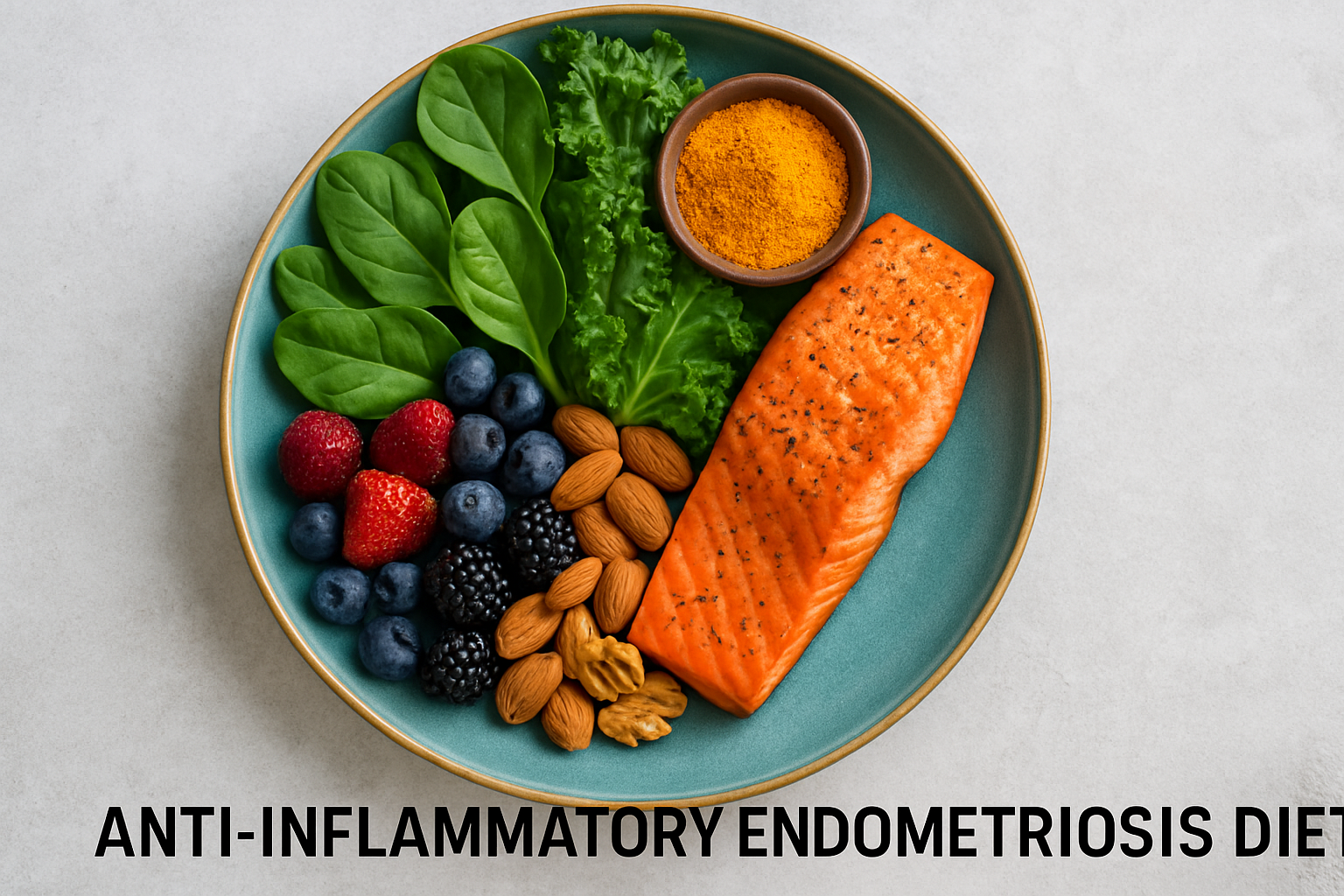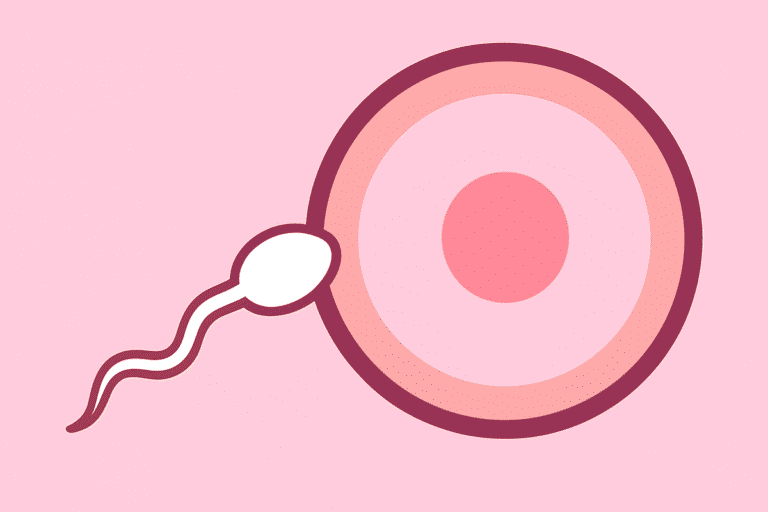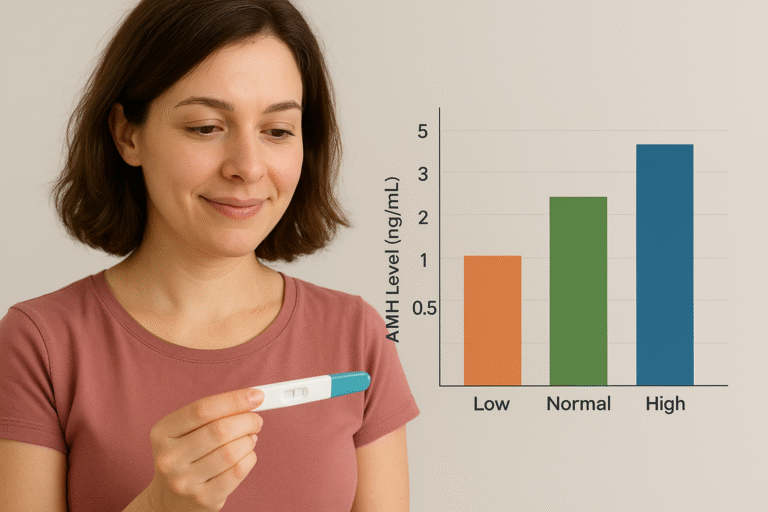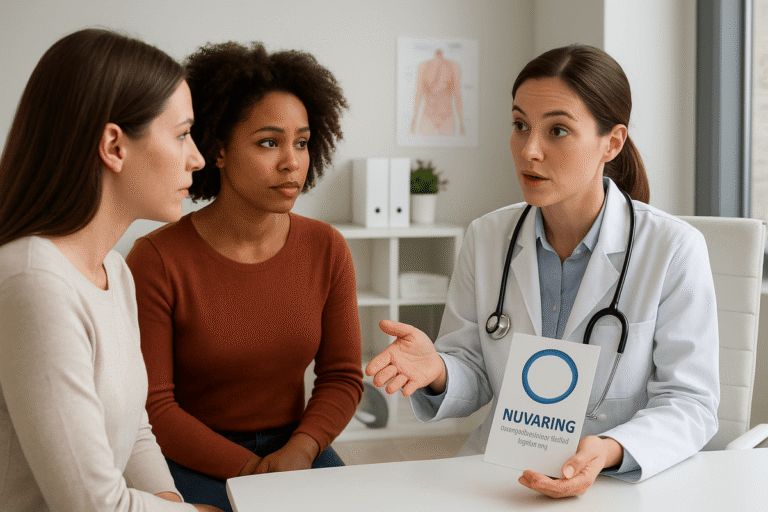Living with endometriosis may seem like being in a never-ending maelstrom of pain, exhaustion, digestive problems, and mental turmoil. If you’re one of the millions of women who have this complicated disorder where tissue that looks like the lining of the uterus develops outside the uterus, in such a scenario, you know how desperate people are to find treatment that goes beyond what regular medication can provide. Surgery and hormonal medications are still the major treatments, but a new study shows that changing your food, especially by following a planned endometriosis diet, may have a huge effect.
This isn’t about short-lived trends or severe rules. It’s about knowing how what you eat, chronic inflammation, hormonal balance, and the severity of your endometriosis symptoms are all connected. More and more, science is showing that certain foods have amazing effects on inflammation, estrogen activity, detoxification, and maybe even slowing the formation of lesions. This in-depth essay goes into great detail on seven science-backed foods you should eat more of and the basic rules of an anti-inflammatory diet that works for managing endometriosis. Getting this information might be a life-changing step in getting your health back.
Understanding Endometriosis: Inflammation and the Gut-Immune Connection
Endometriosis is more than simply “bad period pain.” It’s a long-term, inflammatory, estrogen-dependent disorder in which tissue that is similar to the lining of the uterus grows outside the uterus, usually on the ovaries, fallopian tubes, pelvic lining, and even the intestine or bladder. These implants react to changes in hormones, which can cause bleeding, inflammation, scarring (adhesions), and severe pain. This can show up as debilitating pelvic pain, painful periods (dysmenorrhea), painful sex (dyspareunia), infertility, chronic fatigue, and stomach problems like bloating, constipation, or diarrhea.
Endometriosis causes systemic inflammation, which is very important. The body sees these misplaced implants as foreign invaders and sends out a lot of inflammatory chemicals (cytokines and prostaglandins) in reaction. This long-term inflammation not only causes pain and damage to tissues, but it may also make the condition worse. There is also a very interesting and complicated connection between endometriosis and gut health, which is often called the “gut-endo axis.” An imbalance in gut bacteria (called dysbiosis) can worsen inflammation, alter estrogen breakdown, and affect estrogen levels that promote endometriosis growth. A focused endometriosis diet is really important here since it directly aims to put out this inflammatory fire and keep the stomach healthy.
Learning about the Pros and Cons of L-Arginine
Why Dietary Changes Are Crucial for Managing Endometriosis Symptoms
Making smart adjustments to your diet isn’t about discovering a magical cure; it’s about laying the groundwork for managing endometriosis symptoms and enhancing your quality of life as a whole. Hormones and surgery are the main therapies that doctors use, but they don’t always deal with the underlying inflammation that keeps the problem going. Food gives your cells information that directly affects:
- Inflammation Levels: Foods that cause inflammation, including processed meats, refined sugars, and trans fats, may make it worse. Foods that fight inflammation, on the other hand, can help stop it by directly lowering pain signals and tissue irritation.
- Estrogen Metabolism: Some meals help the liver break down and get rid of extra estrogen more quickly. This stops the hormone from being reabsorbed and lowers the amount of hormonal fuel for endometriosis implants. On the other hand, diets heavy in processed foods might make this detoxification less effective.
- Function of the Immunological System: Eating a balanced diet full of antioxidants and other nutrients might polarize the natural immunological response, which may stop specks from getting too giggly and causing inflammation surrounding lesions.
- Gut Microbiome Health: Foods high in fiber and prebiotics feed good gut bacteria, which are critical for controlling inflammation and estrogen levels. There is more and more evidence that gut dysbiosis is connected to how bad endometriosis is.
- Oxidative Stress: Endometriosis raises oxidative stress, which hurts cells. Foods that are high in antioxidants help protect tissues from this harm.
So, following an anti-inflammatory diet as part of your endometriosis diet plan is a proactive way to regain some control, lessen your symptoms, and help your body recover naturally while still receiving medical treatment.
7 Foods for Your Endometriosis Diet That Are Backed by Science
Now, let’s look at the research-backed nutritional powerhouses that may help you along the way. Make sure to include these items in your meals regularly:
1. Omega-3 fatty acids
Omega-3 fatty acids are perhaps the most important dietary companions when it comes to treating the chronic inflammation that causes endometriosis symptoms. Fatty fish are full of these strong anti-inflammatory lipids, especially EPA (eicosapentaenoic acid) and DHA (docosahexaenoic acid). They function by directly competing with omega-6 fatty acids that cause inflammation (which are present in fried and processed meals) in cell membranes. Instead of merely stopping inflammation, omega-3s turn into anti-inflammatory chemicals (resolvins and protectins) that actively get rid of it.
Many studies have shown that eating more omega-3s lowers the likelihood and severity of endometriosis. Research in Human Reproduction revealed that women who ate the most omega-3s were 22% less likely to be diagnosed with endometriosis. Try to eat 2–3 servings of wild-caught salmon, mackerel, sardines, herring, or anchovies per week. If you don’t like fish, you may take high-quality algae-based DHA/EPA supplements instead, but only under the advice of a physician.
Also Read: What happens when your prolactin levels are too high?
2. Vibrant Leafy Green Vegetables
Spinach, kale, Swiss chard, collard greens, and arugula are dark leafy greens that are very important for any anti-inflammatory diet, particularly for endometriosis. They have a lot of magnesium, which is a mineral that is important for relaxing muscles. Such vegetables may assist with the unpleasant cramping in the uterus and pelvis that comes with endometriosis.
A lot of people who have this condition don’t get enough magnesium. Greens are also full of B vitamins, including folate and B6, which are important for the liver to function properly. The liver is the main organ that detoxifies your body. It breaks down and gets rid of extra estrogen. Eating greens that are full of nutrients is important for keeping hormones in balance and keeping the liver healthy.
In addition, they are full of antioxidants like vitamin C, beta-carotene, and other phytonutrients that fight oxidative stress and inflammation. The high fiber content also helps the colon stay healthy and helps with regular bowel movements, which helps the body get rid of estrogen. At least one meal a day, try to cover half your plate with these greens. You can add them to smoothies, salads, soups, or stir-fries, or just sauté them with garlic and olive oil.
Raspberry leaf tea and chamomile tea while pregnant
3. Deeply Colored Berries
Berries, such as blueberries, strawberries, raspberries, blackberries, and cherries, are nature’s delight. They are full of powerful anti-inflammatory and antioxidant elements. Anthocyanins and other flavonoids give them their bright hues. These compounds are excellent at neutralizing free radicals, which are unstable chemicals that destroy cells and are a major cause of endometriosis development and pain. Studies show that the antioxidants in berries may help lower the levels of inflammatory markers that are high in endometriosis.
They also include quercetin, a flavonoid that is known to reduce inflammation and discomfort. Berries also include less sugar than most other fruits and more fiber, which helps keep blood sugar levels steady. Changes in hormones and inflammation may happen when blood sugar levels are out of whack. As a snack, in smoothies, yogurt, or oatmeal, or as a refreshing dessert topping, enjoy a big handful every day. Frozen berries retain most of their nutrients and are a good choice all year round.
4. Turmeric (Curcumin)
Curcumin is a strong bioactive molecule found in turmeric, the spice that gives curry its golden color. Curcumin is well-known for being a strong anti-inflammatory food, and it is frequently likened to certain prescription anti-inflammatories that don’t have the bad side effects. It acts by stopping many molecular processes that are involved in inflammation, such as the NF-kB pathway, which is commonly too active in endometriosis. Studies on animals and current human trials show that curcumin may help shrink endometriosis lesions, stop new blood vessels from forming around them, and stop cells from multiplying, which would assist with the discomfort that comes with endometriosis.
Curcumin’s low bioavailability on its own is a major problem. To get the most out of turmeric, eat it with black pepper (which contains piperine, which may boost absorption by up to 2000%) and a healthy fat like coconut or olive oil. Use a lot of turmeric powder in curries, soups, stews, roasted vegetables, rice dishes, or golden milk lattes. Under supervision, high-quality curcumin supplements that are standardized for high absorption (typically with piperine or lipids) are frequently advised for therapeutic dosages that address severe endometriosis symptoms.
5. Flaxseeds
These little brown seeds are really good for your hormones when you eat an endometriosis diet. Flaxseeds are the best food source of lignans, which are a form of phytoestrogen. Phytoestrogens may help balance the body’s natural estrogen, which is not the case with phytoestrogens. They are lesser estrogens that can attach to estrogen receptors. This might stop the greater, perhaps damaging effects of the body’s own estrogen or environmental xenoestrogens on endometriosis tissue. Think of them as softly taking up the “parking spots” so that the stronger estrogens can’t.
Some research shows that eating more lignans may lower the risk of endometriosis. Flaxseeds are also a great source of both soluble and insoluble fiber. Soluble fiber helps bind extra estrogen in the digestive system, which helps the body get rid of it via the intestines and prevents it from being reabsorbed. Flaxseeds also include alpha-linolenic acid (ALA), an omega-3 fatty acid that comes from plants and has anti-inflammatory properties.
Freshly ground flaxseeds (whole seeds are not digested) may be added to smoothies, porridge, yogurt, or baked products once or twice a day. To keep ground flaxseed (flax meal) from going bad, keep it in the fridge or freezer.
6. Nuts and Seeds (Walnuts, Chia, Pumpkin)
In addition to flaxseeds, a wide variety of nuts and seeds may help with the symptoms of endometriosis. Another great plant source of omega-3s that fight inflammation is walnuts. Chia seeds are great for getting rid of estrogen since they are high in fiber. They also include a lot of ALA, calcium, and magnesium. Pumpkin seeds, or pepitas, have a lot of zinc and magnesium in them. As indicated, magnesium is important for relaxing muscles and relieving pain. Zinc is also important for the immune system, hormone balance, and healing wounds.
Almonds are a good source of calcium and vitamin E, which is a strong antioxidant. Brazil nuts are well-known for their high levels of selenium, a mineral that is important for thyroid health and detoxification pathways. Nuts and seeds are great snacks and additions because they provide a lot of healthy fats (mono- and polyunsaturated), fiber, protein, magnesium, zinc, and antioxidants. These things help reduce inflammation and balance hormones. Pick ones that are uncooked, dry-roasted, and unsalted.
Try to eat a tiny handful (approximately 1/4 cup) every day. You may sprinkle them over salads, mix them into smoothies, swirl them into yogurt, or eat them as a snack. Nut and seed butters that don’t have any added sweeteners or hydrogenated oils are also great choices.
What Are the Signs and Causes of Having Too Much Cortisol?
7. Cruciferous Vegetables
The cruciferous family includes broccoli, cauliflower, Brussels sprouts, cabbage, kale (which is also a leafy green), bok choy, and arugula. Because of their special chemicals called glucosinolates, they are essential for a diet for endometriosis. When victuals are cut or chewed, separat Cancinoids are arranged into physiologically active chemicals like indole-3-carbinol (I3C) and sulforaphane. These chemicals are very important for the liver’s Phase I and Phase II detoxification pathways, which are the complicated biochemical processes that break down hormones (including estrogen), toxins, and metabolic waste products so they can be removed from the body.
Cruciferous vegetables help keep estrogen levels from becoming too high, which is a major cause of endometriosis development. They accomplish this by making the body better at breaking down and getting rid of extra estrogen. Sulforaphane is also a strong anti-inflammatory and antioxidant. At least one dish should be included every day. For some people, lightly heating or sautéing them might make them simpler to digest than eating them raw. Eating them raw, such as in salads or slaws, is also good for you. You may have roasted broccoli or cauliflower, stir-fried bok choy, salads with shredded Brussels sprouts, or traditional coleslaw.
How to Make Your Endometriosis Diet Work: Useful Tips
Making the switch to an endometriosis diet based on these science-backed foods and ideas takes time and planning:
- Take it slow: Don’t change everything all at once. Start by adding one or two of the “core 7” items to your diet every week. Instead of snacks that cause inflammation, eat nuts or berries.
- Plan and Prepare: Set aside time each week to plan and prepare meals. Chop up and wash the vegetables, prepare big quantities of quinoa or brown rice, hard-boil the eggs, and divide the nuts and seeds into little amounts. Having healthy alternatives on hand stops you from choosing processed foods.
- Read the labels carefully. If you’re trying to cut out gluten, be on the lookout for hidden sugars, inflammatory oils (including soybean, maize, sunflower, and “vegetable oil”), and gluten. Look for items that are whole foods.
- Cook More at Home: This lets you choose the ingredients and how they are cooked (steaming, baking, or sautéing instead of frying).
- Pay attention to your body: Keep a log of what you eat and how you feel. Pay attention to how you feel after eating particular meals. Endometriosis is quite different for each person; what works for one person may not work for another. Find out what things set you off (for some people, dairy, red meat, soy, caffeine, and alcohol are popular ones)
- Get Professional Help: Talk to a registered dietitian (RD) or nutritionist who knows a lot about women’s health, hormones, or endometriosis. They can help you make your plan more personal, make sure you’re getting enough nutrients (particularly if you’re cutting out gluten or dairy), read your symptom log, and provide you encouragement. Talk to your doctor about supplements like high-quality curcumin, omega-3s, magnesium, N-acetylcysteine (NAC), or vitamin D as well.
- Be patient and stick with it: dietary changes take time to work. It might take weeks or even months to see big changes in the symptoms of endometriosis. Being consistent is important. Don’t try to be flawless; just keep moving forward.
Conclusion: An endometriosis diet may help you take charge of your journey.
You need to take a lot of different steps to manage endometriosis, and your diet is a really strong one that you can control. You can fight the inflammation and hormonal imbalances that make your endometriosis symptoms worse by carefully adding seven science-backed foods to your diet: fatty fish high in omega-3 fatty acids, colorful leafy greens, deeply colored berries, powerful turmeric (curcumin), hormone-balancing flaxseeds, mineral-rich nuts and seeds, and detox-supporting cruciferous vegetables. Following the general rules of an anti-inflammatory diet and perhaps trying a gluten-free diet with help may work together.
Keep in mind that making big adjustments to your diet takes time and effort. There is no quick remedy, but the possible benefits, less pain, more energy, better digestion, and greater overall health, are beyond measure. Take it slow, praise your success, pay attention to your body, and work with healthcare specialists who know what they’re doing. Your endometriosis diet is a journey of eating well and feeling strong. It’s an important step in getting your health and energy back from this tough disease. Take the first step toward feeling better today.




